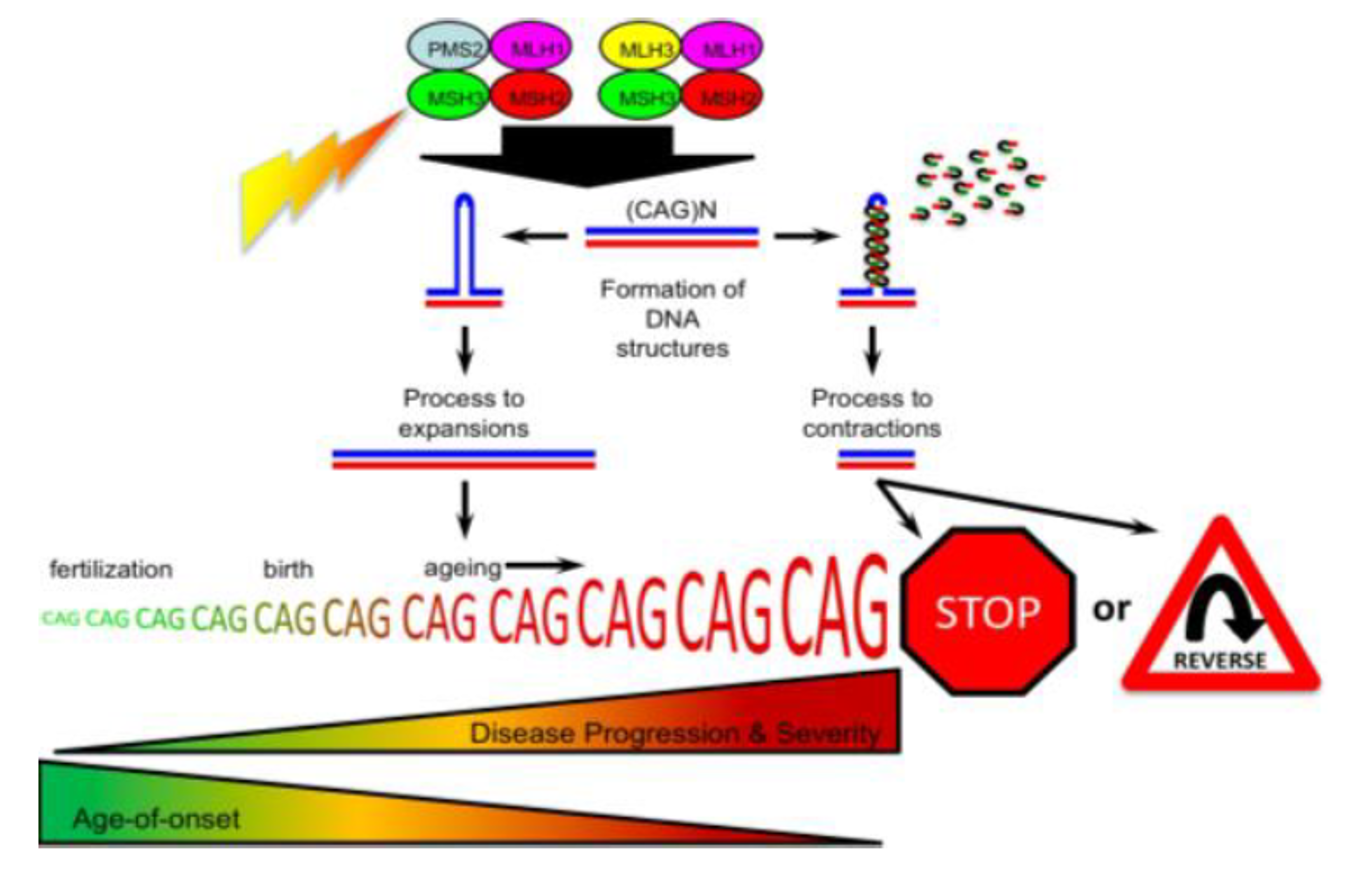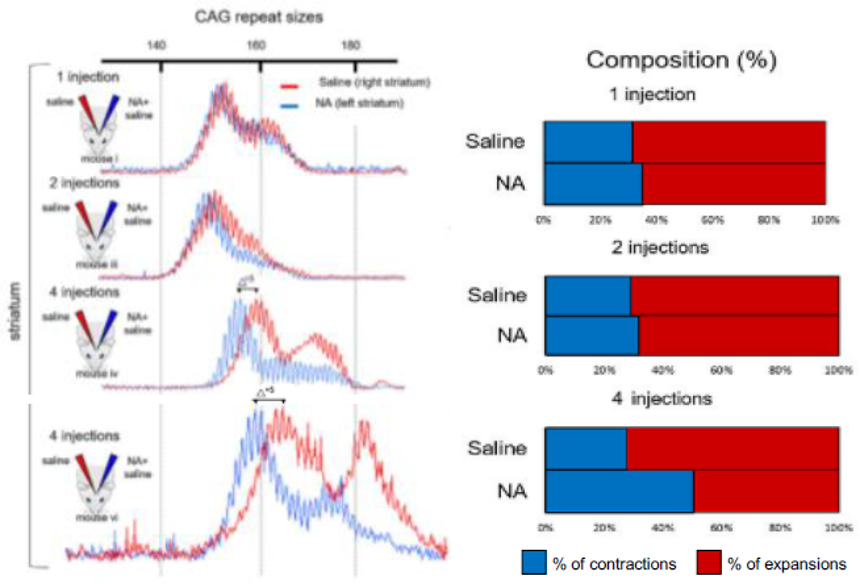|
BACKGROUND
Genetic expansions of CAG/CTG trinucleotide repeat sequences in certain genes have been linked to at least 40 neurodegenerative, neurological, and neuromuscular diseases, including Huntington's disease (HD), fragile X syndrome, myotonic dystrophy, various spinocerebellar ataxias, and amyotrophic lateral sclerosis. These repeat expansions tend to get larger as they are inherited from one generation to the next, resulting in earlier age of onset, increased disease progression and severity. Importantly, the expansions grow in size as the individual ages, are believed to drive the disease onset, progression, and severity. A reduction of a few repeats could delay onset by years, and a method of arresting or reversing somatic CAG/CTG could be used to arrest or even reverse disease onset, progression, and severity (Figure 1).
DESCRIPTION OF THE INVENTION
The Pearson lab, in collaboration with colleagues at Osaka University, have discovered that a small molecule, Naphthyridine-Azaquinolone (NA), is useful in treating CAG/CTG repeats. NA not only arrests CAG/CTG expansions, but it induces contractions of expanded CAG repeats in HD patient cells and in a HD mouse model.
NA acts specifically upon the mutant expanded repeat (Figure 2) with no observed off-target effects (no effect on the nonexpanded allele, and without damaging the rest of the genome). The Pearson lab has developed a platform to discover chemical matter specific to other trinucleotide repeat diseases. Current work includes fragile X syndrome, amyotrophic lateral sclerosis, Friedreich’s ataxia, and myotonic dystrophy.
COMMERCIAL APPLICATIONS & ADVANTAGES
This can be a transformative therapy for individuals with a range of neurodevelopment conditions, as there is currently no cure for rare trinucleotide repeat diseases.
DEVELOPMENT STAGE
Preclinical in vitro and in vivo.
PATENT STATUS
Three patent families include:
Patent # PCT/IB2017,054,932 (filed in US, Canada, China, Japan, Hong Kong)
Patent # PCT/IB2022/054,139
Provisional patent application # 63/373,501
|
 Figure 1. Targeting DNA repair proteins and/or Slipped-DNAs can modulate
Figure 1. Targeting DNA repair proteins and/or Slipped-DNAs can modulate
disease-causing expanded CAG tracts for therapeutic benefit
 Figure 2. NA induces repeat contractions in vivo
Figure 2. NA induces repeat contractions in vivo
|